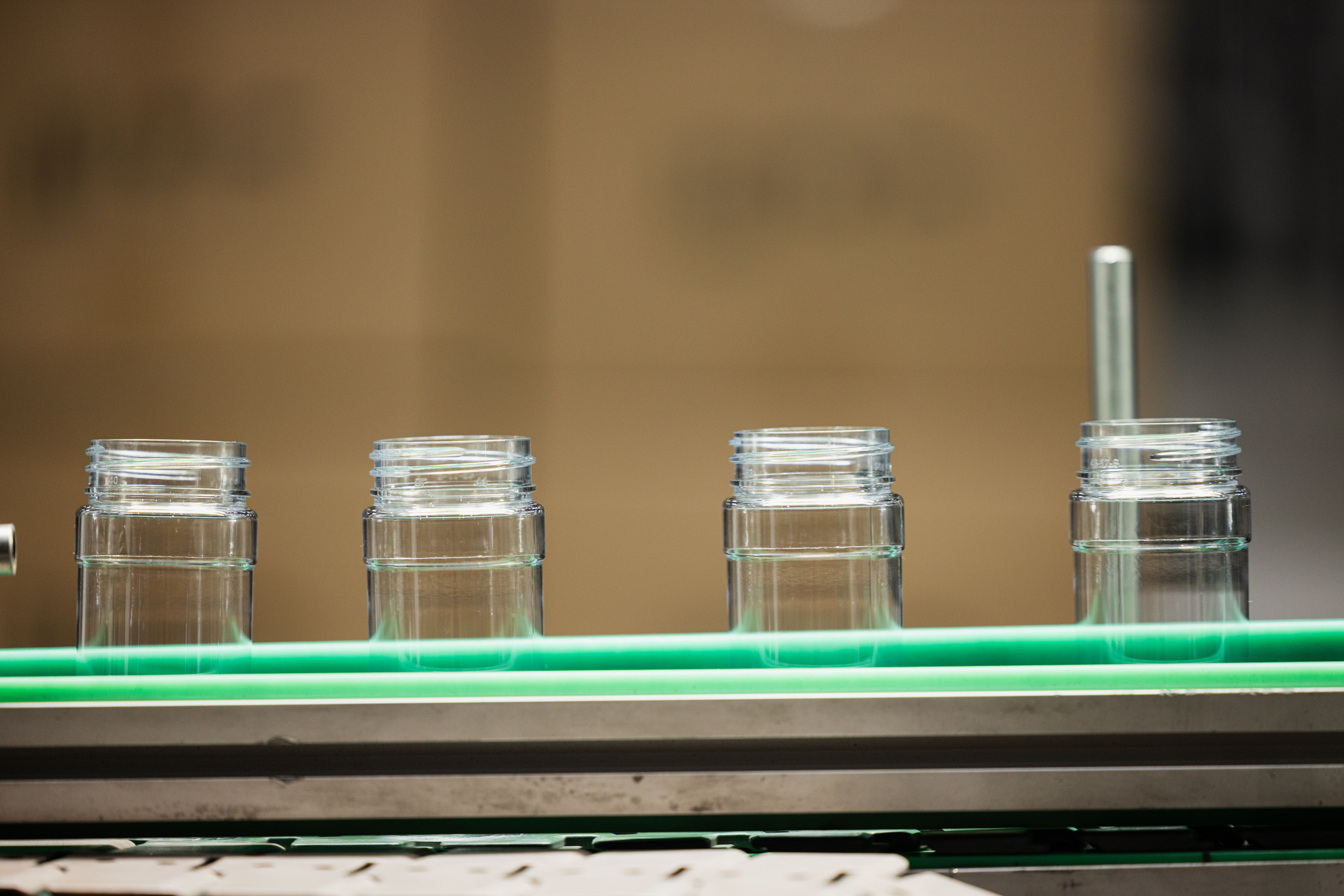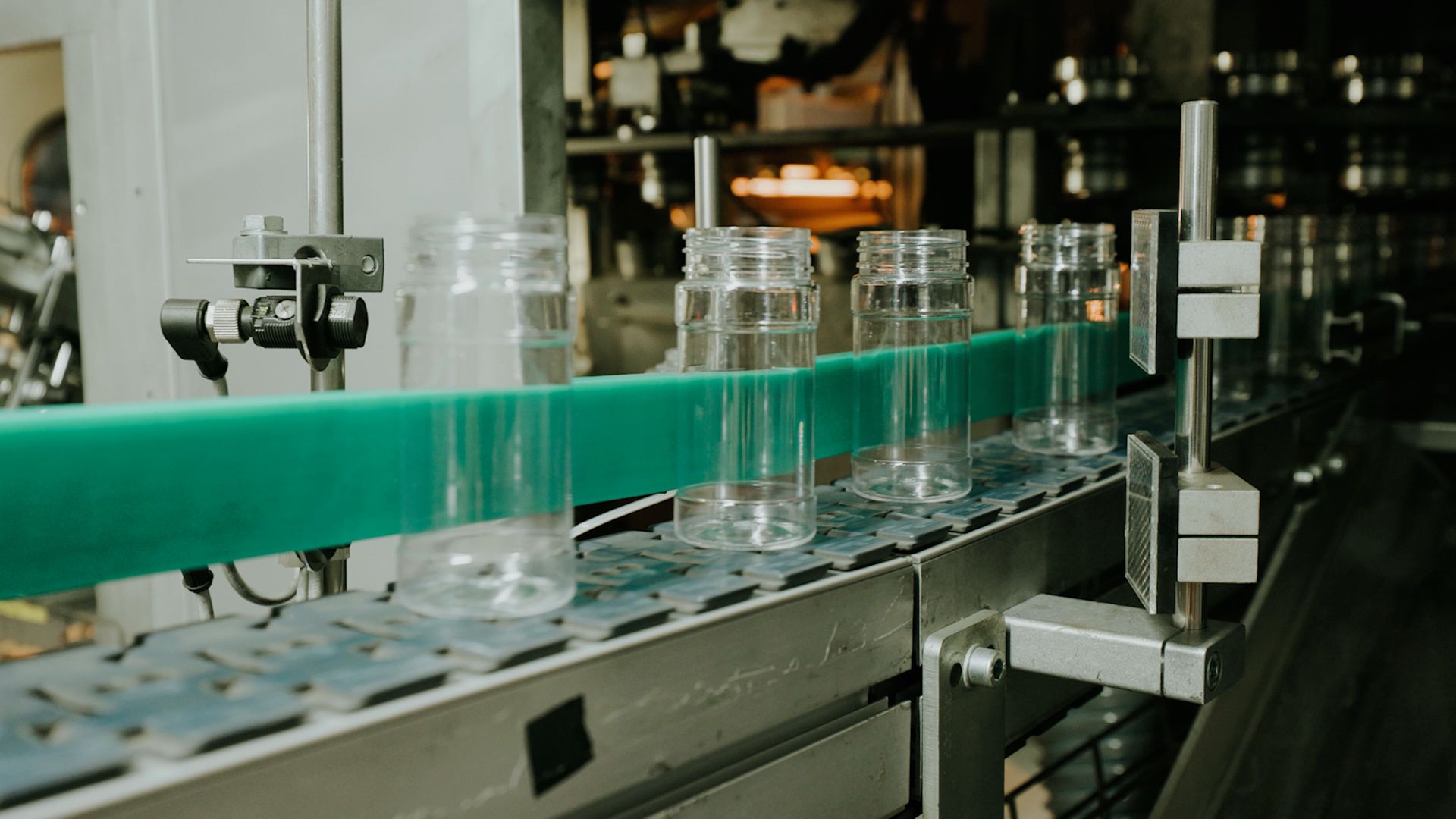What Is rPET and Why Should You Use It for Packaging?
Recycled polyethylene terephthalate (rPET) is a strong, lightweight, and versatile plastic that can be used for packaging products like foods, beverages, cosmetics, and pharmaceuticals. In this article, we’ll delve into how rPET is manufactured and look at some of the advantages it offers over other plastic packaging.
What Is PET Plastic?
It all actually starts with polyethylene terephthalate (PET), a plastic polymer that was developed and patented in 1941 by the Calico Printer’s Association in the United Kingdom. For decades, PET plastic was used primarily in the manufacture of polyester. It wasn’t until 1973 that DuPont in the United States invented and patented the PET plastic bottle.
As a means of packaging, PET has a lot going for it. It’s strong, lightweight, transparent, and very malleable. However, virgin PET (which is made from oil and petrochemicals) requires considerable energy to manufacture. And its durability, which is an asset for packaging, can be a liability in the landfill (where it can take *centuries* to start breaking down).
Fortunately, PET plastic is 100% recyclable. And that’s where rPET plastic comes in. Post-consumer PET containers (especially plastic bottles) can be collected, sorted, cleaned, and converted into rPET pellets, which can be used to manufacture new packaging!
How Is rPET Plastic Made?
The used PET plastic is collected through recycling programs and transported to a recycling center or material recovery center. Once it is sorted from other recyclable materials, the PET is baled and sent to a specialized PET recycling facility.
There, the PET is sent through a trommel where steam and chemicals are used to clean the plastic and remove any labels. The PET is also run through near infrared (NIR) equipment to remove contaminants and through another sorting belt, where employees physically remove any non-PET materials.
The PET plastic is then ground into pure flakes, which are rinsed and run through a melt filtering screen. The melted flakes pass through the screen and eventually cool to form rPET pellets. In this pellet form, the rPET plastic can be efficiently transported and remanufactured.
There are various grades of rPET pellets. The highest quality can be used to manufacture recycled packaging that’s indistinguishable from virgin PET. Lower quality rPET can still be used for clothing, upholstery, automotive parts, etc.
(The rPET pellets from Plascene are of the highest quality in terms of clarity and durability. They are FDA certified food grade, which makes them ideal for any of your packaging needs–food and beverage, sports and nutrition, health and beauty, or pharmaceutical.)
The Advantages of rPET
So what are the benefits of using rPET packaging for your product? Here are a few:
rPET Offers the Same Advantages as PET
Like virgin PET plastic, rPET offers a number of advantages over glass bottles. Like glass, it is transparent and safe for use with food or beverages. Unlike glass, it’s light and shatterproof.
Consumers Want It
In the wake of the pandemic, consumers are becoming more interested in their packaging and what it’s made of. According to the
2021 Global Buying Green Report from Trivium Packaging (who basically do what we at Plascene do, only with metal rather than plastic):
67% of consumers prefer to buy products in recyclable packaging.
54% of consumers take sustainable packaging into consideration when choosing a product.
83% of consumers are willing to pay *more* for sustainable packaging.
It’s Good for the Environment
Logically, it makes sense. Supplementing virgin PET with rPET means less digging into the petroleum reserves *and* less discarded PET simply wasting away in landfills. But for those who like their data hard, a
2018 study from ACS Sustainable Chemistry & Engineering reveals these facts:
Manufacturing rPET requires 79% less energy and 90% less water than producing virgin PET.
The rPET manufacturing process produces 71% less greenhouse gas emissions than the virgin PET manufacturing process.
References
Exploring Comparative Energy and Environmental Benefits of Virgin, Recycled, and Bio-Derived PET Bottles –
ACS Sustainable Chemistry & Engineering
2021 Global Buying Green Report –
Trivium Packaging
What Is rPET Plastic, and Why Should You Embrace It? –
Everyday Recycler
What Is rPET and Should We Be Choosing It Over Plastic? –
Utopia.org
Recycled rPET Facts –
IBWA (International Bottled Water Association)

How Recycled Polypropylene (rPP) Is Changing the Future of Packaging in the U.S.





